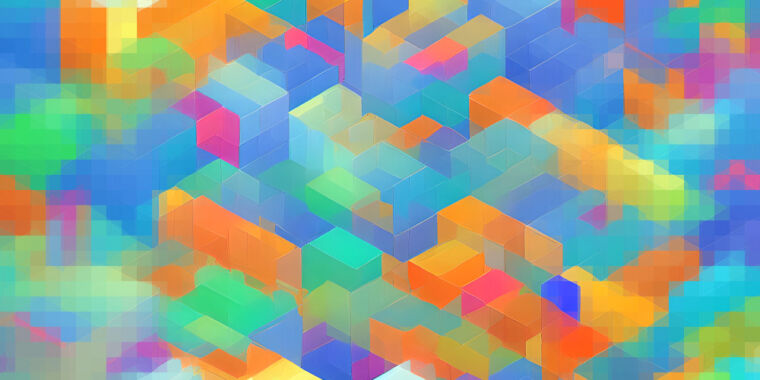

Enlarge / These jagged, colorful blocks are exactly what the concept of image compression looks like. (credit: Benj Edwards / Ars Technica)
Last week, Swiss software engineer Matthias Bühlmann discovered that the popular image synthesis model Stable Diffusion could compress existing bitmapped images with fewer visual artifacts than JPEG or WebP at high compression ratios, though there are significant caveats.
Stable Diffusion is an AI image synthesis model that typically generates images based on text descriptions (called "prompts"). The AI model learned this ability by studying millions of images pulled from the Internet. During the training process, the model makes statistical associations between images and related words, making a much smaller representation of key information about each image and storing them as "weights," which are mathematical values that represent what the AI image model knows, so to speak.
When Stable Diffusion analyzes and "compresses" images into weight form, they reside in what researchers call "latent space," which is a way of saying that they exist as a sort of fuzzy potential that can be realized into images once they're decoded. With Stable Diffusion 1.4, the weights file is roughly 4GB, but it represents knowledge about hundreds of millions of images.

No comments:
Post a Comment